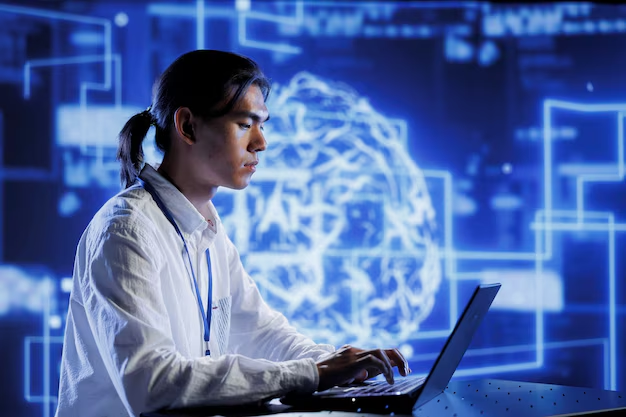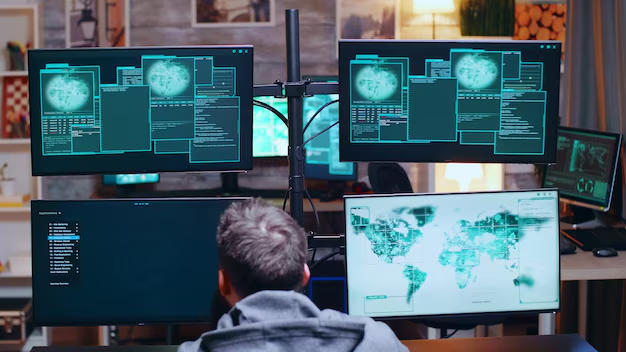Disasters, both natural and man-made, have devastating effects on communities, infrastructure, and economies around the world. The ability to manage these disasters effectively is critical for saving lives, minimizing damage, and facilitating swift recovery. Traditionally, disaster management has relied on human intervention and manual processes, but as the scale and complexity of disasters increase, so does the need for advanced technologies to enhance these efforts.
In recent years, Artificial Intelligence (AI) has emerged as a powerful tool in disaster management, offering new ways to predict, respond to, and recover from disasters more efficiently. AI can analyze vast amounts of data in real time, identify patterns and trends, and make decisions faster than humans, all of which are crucial during a disaster. From early warning systems to post-disaster recovery efforts, AI’s potential to transform disaster management practices is vast and growing.
This article explores how AI is revolutionizing disaster response and recovery, highlighting its key applications, the technologies driving it, and the challenges and future trends that will shape its role in this critical field.

Understanding the Role of AI in Disaster Management
Artificial Intelligence (AI) plays a pivotal role in modern disaster management by providing real-time insights, enhancing decision-making processes, and optimizing the coordination of response efforts. The application of AI spans the entire disaster lifecycle, from prevention and prediction to recovery and rehabilitation.
1. AI as a Tool for Disaster Prediction, Monitoring, and Assessment
AI’s primary strength lies in its ability to analyze large datasets quickly and accurately. In disaster management, this ability can be harnessed to predict disasters before they occur and to assess ongoing risks. For instance:
- Predictive Analytics: Machine learning models can analyze historical data, climate patterns, and environmental variables to forecast natural disasters like hurricanes, earthquakes, floods, and wildfires. AI algorithms can learn from previous events, improving their prediction accuracy over time.
- Real-time Monitoring: AI can process data from sensors, satellites, drones, and weather stations to monitor disaster-prone areas in real-time. This constant surveillance can detect early signs of potential threats, such as rising water levels or seismic activity, allowing for timely warnings and better preparedness.
2. Real-time Data Analysis and Decision-Making Capabilities
Disasters unfold quickly, and timely decisions are essential. AI accelerates decision-making by analyzing data from multiple sources simultaneously, identifying patterns, and offering actionable insights. For example:
- Rapid Analysis: During an emergency, AI can process social media feeds, weather reports, emergency calls, and sensor data to detect areas most at risk, enabling authorities to deploy resources effectively and prioritize efforts.
- Smart Decision Support Systems: AI-driven systems help emergency responders make informed decisions by providing real-time suggestions. These systems can calculate optimal routes for evacuation, identify the safest shelters, or even recommend which areas to focus rescue operations on based on available data.
3. Examples of AI-Powered Technologies in Disaster Management
- Machine Learning and Data Mining: By processing and learning from vast amounts of historical disaster data, machine learning algorithms can identify hidden patterns that can predict future events. These systems are capable of adapting as new data is fed into them, continuously improving their accuracy.
- Computer Vision: AI-powered computer vision technologies can analyze images and videos from drones, satellites, or ground-based cameras to assess disaster impact. For instance, AI can identify damage to buildings, roads, and other infrastructure, providing authorities with an accurate damage assessment.
- Robotics and Drones: Autonomous drones and robots powered by AI are increasingly used for search and rescue missions. Drones can access areas that are too dangerous for humans, while robots can help in tasks like locating survivors, delivering supplies, or clearing debris.

Enhancing Disaster Response with AI
The effectiveness of disaster response is heavily dependent on timely and coordinated actions. AI enhances these efforts by enabling faster decision-making, automating processes, and providing real-time insights that allow responders to act swiftly and strategically. Here are some key ways AI is improving disaster response:
1. AI in Early Warning Systems and Hazard Detection
Early detection is crucial in minimizing the impact of disasters. AI enhances early warning systems by processing large volumes of environmental data, such as weather patterns, seismic readings, and ocean conditions, to detect potential hazards early on.
- Flood Forecasting: AI can predict flooding events by analyzing real-time data from river levels, weather patterns, and terrain maps. This predictive capability allows authorities to issue warnings and evacuations before a flood occurs.
- Earthquake Detection: Using machine learning algorithms, AI can analyze seismic data to detect earthquake tremors and predict the intensity of future shocks. Early alerts can be sent out to minimize loss of life and damage to infrastructure.
- Wildfire Detection: AI algorithms, paired with satellite data and ground sensors, can detect the conditions conducive to wildfires, such as temperature, humidity, and wind speed, allowing for early warnings in vulnerable areas.
2. Automated Systems for Coordinating Emergency Responses
Coordinating a disaster response can be chaotic, especially when multiple agencies and organizations are involved. AI can streamline this process by automating key tasks and helping authorities allocate resources efficiently.
- Resource Allocation: AI-driven systems can analyze data from affected areas in real time to determine where resources are needed most. This could include directing rescue teams to areas with the highest number of casualties or ensuring medical supplies are sent to the most affected regions.
- Predictive Routing for Emergency Services: Using real-time traffic data, AI can recommend the fastest routes for ambulances, fire trucks, and other emergency responders, even as road conditions change due to the disaster.
- AI in Incident Management Systems: AI tools integrated into incident management platforms can assist in organizing rescue teams, tracking the deployment of resources, and ensuring that key operations are carried out efficiently without duplication of efforts.
3. AI-Powered Drones and Robots for Search and Rescue Missions
AI-powered drones and robots have become essential tools in search and rescue operations, particularly in environments that are hazardous or hard to reach.
- Drones for Aerial Surveys: Drones equipped with AI can fly over disaster areas, capture high-resolution images, and use computer vision to identify damage to infrastructure or find survivors trapped under debris. These drones can cover large areas quickly, providing responders with crucial information.
- Autonomous Rescue Robots: Ground-based robots, often powered by AI, are used to search collapsed buildings or navigate through hazardous environments. These robots can move autonomously, using AI-driven decision-making to locate survivors, deliver supplies, or clear debris.
- AI in Thermal Imaging: Drones and robots equipped with thermal cameras use AI to identify heat signatures from trapped individuals. This allows rescuers to focus their efforts on specific areas, speeding up the search process.
4. Real-Time Communication Tools for Coordination Among Rescue Teams
Effective communication during a disaster response is vital for coordinating efforts across different teams. AI enhances communication systems by providing real-time translations, analyzing critical information, and predicting what assistance is needed next.
- Natural Language Processing (NLP): AI-powered NLP systems can process communication from different languages, allowing international teams to work together seamlessly. This is especially important in large-scale international disaster responses, where teams from different countries may be involved.
- Social Media Monitoring: AI can track social media platforms for posts related to the disaster, identifying people who need help or locations that require immediate attention. This crowdsourced information can supplement official data and help responders pinpoint areas with the greatest need.
- AI-Driven Crisis Mapping: By aggregating data from social media, news outlets, and emergency calls, AI can create real-time crisis maps that show where the most urgent needs are, such as food, water, or medical aid. This helps authorities direct efforts to the areas in greatest need.
Key AI Technologies in Disaster Management
AI encompasses a wide range of technologies that are specifically designed to address the unique challenges of disaster management. From predictive analytics to robotics, these technologies help responders mitigate risks, make faster decisions, and optimize resource allocation. Here’s a look at some of the most important AI technologies in disaster management:
1. Machine Learning for Predictive Modeling and Risk Analysis
Machine learning (ML), a core component of AI, plays a crucial role in predicting and mitigating disasters. By training models on historical data, environmental patterns, and other relevant datasets, machine learning can forecast potential disasters with remarkable accuracy.
- Risk Assessment: Machine learning algorithms can analyze vast amounts of historical data to predict the likelihood of events like floods, earthquakes, wildfires, or hurricanes. These models help identify areas at high risk, allowing authorities to implement preventative measures or issue early warnings.
- Disaster Forecasting: ML models can process real-time data, such as weather patterns, seismic activity, and ocean currents, to predict when and where disasters are likely to occur. For example, in the case of hurricanes or cyclones, ML-based forecasting systems can predict the storm’s intensity and path, giving communities and responders time to prepare.
2. Natural Language Processing (NLP) for Social Media and Communication Analysis
Natural Language Processing (NLP), a subset of AI, allows machines to understand and interpret human language. In disaster management, NLP can analyze communications from a variety of sources, such as social media platforms, emergency calls, news articles, and official reports.
- Social Media Monitoring: During a disaster, people often post real-time updates on social media, which can be invaluable for responders. NLP can analyze these posts for keywords like “help,” “missing,” or “urgent,” allowing authorities to identify areas in need of assistance or detect emerging issues.
- Text Analysis: NLP also helps in processing large volumes of textual data from emergency calls, chatbots, or public forums. By identifying relevant information (such as the location of affected individuals or the type of disaster), NLP can help prioritize response efforts.
3. Computer Vision for Damage Assessment and Monitoring
Computer vision, another powerful AI technology, involves training machines to interpret and understand visual data, such as images and videos. In disaster management, computer vision can play an instrumental role in assessing damage, monitoring disaster progress, and supporting recovery efforts.
- Satellite and Aerial Imagery: AI-powered computer vision tools can analyze satellite and drone imagery to detect signs of damage or disaster impact. For example, during floods, computer vision algorithms can identify submerged areas, damaged infrastructure, and blocked routes, providing responders with accurate and up-to-date information.
- Damage Detection: After a disaster, computer vision can be used to assess the extent of the damage to buildings, roads, and other critical infrastructure. AI can automatically identify structural weaknesses or areas that need immediate attention, helping prioritize recovery efforts.
4. Robotics and Autonomous Systems for Search and Rescue Operations
Robotic systems and drones, often integrated with AI, are increasingly being used for search and rescue missions. These systems can navigate hazardous environments, perform detailed inspections, and even assist in finding survivors.
- Drones for Aerial Surveys: Drones equipped with AI-powered cameras and sensors can quickly survey disaster zones, access hard-to-reach areas, and gather real-time data. For instance, during an earthquake, drones can fly over collapsed buildings and use computer vision to detect survivors or monitor structural integrity.
- Autonomous Ground Robots: Robots can be deployed in dangerous areas, such as collapsed buildings or areas with hazardous chemicals. These robots are equipped with AI to navigate autonomously, identify survivors using thermal imaging, and deliver supplies or clear debris.
5. AI-Driven Logistics and Supply Chain Management
Efficient logistics are crucial for disaster relief efforts. AI can optimize supply chains, ensuring that resources like food, medical supplies, and equipment are delivered to the most affected areas in a timely and cost-effective manner.
- Predictive Logistics: Machine learning algorithms can predict the demand for resources in specific regions, helping to plan for the right supplies ahead of time. By analyzing historical data and real-time information, AI can forecast which areas will require more resources and adjust supply chains accordingly.
- Optimized Routing: AI-powered systems can calculate the best routes for transportation vehicles, taking into account road conditions, traffic, and disaster-related damage. This ensures that relief efforts are carried out in the most efficient manner possible, reducing delays and resource wastage.
6. AI-Enhanced Decision Support Systems
AI can assist decision-makers in disaster management by providing real-time insights and suggesting actions based on available data. These decision support systems combine various AI technologies, such as predictive analytics, NLP, and computer vision, to support decision-making during a disaster.
- Real-time Data Integration: AI systems can integrate data from multiple sources—such as sensors, satellite feeds, social media, and emergency reports—into a centralized platform. This allows emergency managers to have a complete, real-time view of the situation and make informed decisions about resource allocation, evacuation routes, and other critical actions.
- Simulation and Optimization: AI can simulate different disaster scenarios, helping responders understand the potential outcomes of various actions. This allows for more strategic planning and improved preparedness.
7. Autonomous Vehicles and Drones for Relief Efforts
AI-powered autonomous vehicles (AVs) and drones play a significant role in disaster recovery efforts, especially in areas where traditional transportation is difficult or impossible due to infrastructure damage.
- Autonomous Trucks: AI-driven trucks can transport goods and relief materials to affected areas without the need for human drivers, especially when human resources are stretched thin. These vehicles can navigate autonomously, ensuring the timely delivery of supplies.
- Delivery Drones: Drones powered by AI can deliver medical supplies, food, and water to remote or inaccessible areas. Their ability to fly over blocked roads or flooded zones makes them invaluable for post-disaster recovery.
Conclusion
AI is revolutionizing disaster management by providing innovative solutions that enhance both response and recovery efforts. From predictive analytics that help forecast and mitigate risks to real-time data processing and automation in crisis situations, AI enables quicker, more informed decisions. The integration of AI technologies such as machine learning, computer vision, and robotics ensures that disaster management teams are better equipped to save lives, reduce damage, and streamline recovery operations. As these technologies continue to evolve, their potential to transform disaster management will only grow, offering more efficient and effective ways to protect communities and respond to crises.
The future of disaster management lies in the continuous adoption of AI-driven tools that can adapt to new challenges. By combining AI with human expertise, we can build more resilient systems capable of handling complex and evolving disasters. As the global community faces an increasing number of natural and man-made disasters, AI will be a critical ally in minimizing impacts, improving coordination, and ensuring a quicker recovery. With further advancements, AI will continue to play a vital role in safeguarding lives and property in times of crisis.












